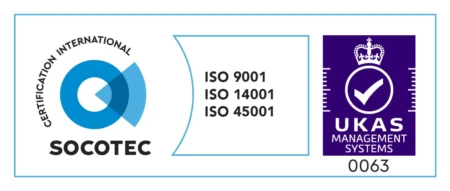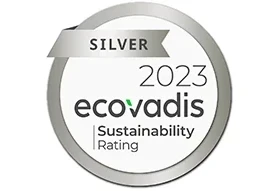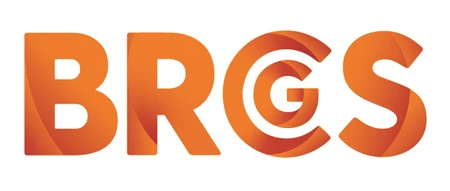FAQS
Cellulose bands (Viskrings)
-
How do I correctly measure my container?
That’s easy use our measurement guide here
-
How do I apply a Cellulose band?
Simply remove a band from the solution, open it and place it around your container. The Cellulose band should be positioned with around 2-3mm overlap at the top to ensure a secure seal. Once it’s in position, simply leave the container to stand, and as the band dries it will shrink to provide a tight seal.
-
Why are the Cellulose bands supplied in a liquid?
The bands are made of Cellulose, a natural material that is constructed from a large number of organic fibres. The solution expands the fibres in order that when they dry it allows the band to shrink around your container.
-
Is the liquid harmful to me?
The liquid is made up of purified water with a very small concentration of a preservative agent, which is non-toxic and non-hazardous. As with all substances, a very small percentage of people may experience minor irritation to the skin, so it is good practice to wear gloves and always wash your hands thoroughly after handling the bands.
-
How do I dispose of my Cellulose bands?
The Cellulose band is plastic free and home compostable – you can dispose of it in your food waste.
-
The Cellulose bands have a strong smell when I open the container. Will this affect my product in any way?
No – the liquid can sometimes intensify the natural smell of the raw material used to make the bands. This smell will fade very quickly as the band dries and the liquid evaporates, so it wont taint your product.
-
Do you offer samples?
Of course – use our sample request form here
Film Cut & Pre-formed Bands
-
How do I correctly measure my container?
That’s easy use our measurement guide here
-
How do I apply film products?
Our cut and pre-formed bands are hand applied, simply take one band and position it around the area of the container that you are looking to seal securely before the heat application process which shrinks the band to form a tight seal.
Our tubing is supplied on reels ready for machine application.
-
What material should I choose for my bands?
Viscose offer 3 different grades of plastic each with their own attributes:
– PVC stands for Polyvinyl Chloride and is the most economical option and historically the most widely used however this is changing due to it being non-recyclable.
– PET stands for Polyethylene Terephthalate and is quickly replacing PVC as the material of choice. Although the cost is higher than PVC this is outweighed by its environmental credentials in that it can be recycled.
– PLA stands for Polylactic acid and is a premium material derived from renewable resources and classed as a compostable. Although not suitable for home composting it is compatible with industrial composting processes.
-
What do I use to shrink the sleeve onto my container?
The advantage of our range of shrink bands is their flexibility. Almost any heat source application will shrink them to fit your container. The most popular options are a hand held heat gun, most standard heat tunnels, steam or even radiant (infra-red) heat sources, all will achieve a quality shrink finish.
-
What’s the difference between a cut band and a pre-formed band?
Whilst both are hand applied and require heat to shrink them onto your container they are slightly different.
A cut band is best suited to containers with a natural “shoulder” allowing the bands to sit in the correct place before heat is applied to shrink them.
A pre-formed band is best for containers with a unique shape or lack that natural “shoulder” – we take a cut band and use a mould to pre-form it for you to give you a smooth & easy application.
-
What temperature should I use to shrink the sleeve?
For a perfect shrink you will need to establish the correct combination of temperature and exposure time. There is no specific temperature that suits all applications. We offer technical assistance to our customers to help find this optimum combination to ensure our products are complementary to yours.
-
What is “print impression length”?
This is the same as cut length for cut bands and pre-formed bands, however tubing is supplied uncut on reels ready for your machine to apply. This tells us how many repeats there are of your chosen artwork on the reel.
-
I don’t know the pantone reference for my coloured bands/capsules – help!
We can help our in house printing experts can colour match to your product label providing a “drawn down” colour sample unique to you.
-
Do you offer samples?
Of course – use our sample request form.
Caps & Closures
-
Can I apply ROPP caps by hand?
These caps must be applied using a capping machine designed for this purpose. Generally used to seal glass bottles, these metal caps are rolled tightly against the thread of the bottle to ensure an optimum seal preventing leakage, contamination and/or loss of carbonation.
-
Why are there different liner options for these caps?
Many different types of liquids can be filled into glass bottles, some requiring carbonation, pasteurisation or fermentation. The liner used should always complement the product contained inside, and each one has different barrier and operational properties.
-
Why is the type of liner important?
The liner is the part of the cap that completes the seal with the bottle, so it must always be compatible with the product you are filling.
For instance:
A liner compatible with pasteurisation needs to be able to withstand high levels of heat, whereas a liner designed for carbonated products doesn’t need to be resistant to heat, but instead must provide excellent barrier properties to prevent carbonation loss. -
What machinery do I need to apply my caps?
The machinery you require will always depend on the type of process you have. For small bottling operations, a bench-top capping machine can be used, but for larger operations, an in-line capping machine may be more suitable. The team at Viscose can introduce you to a number of machinery suppliers that can work with you to identify exactly what you need.
-
Does my cap contain PVC?
A very small number of our ROPP caps contain PVC in the liner compound.
Where possible, we have already replaced PVC-based liners to PVC-free alternatives, and we continue to work towards our full range being 100% PVC-free.
-
Are the caps you supply recyclable?
Yes – our plastic caps are made from HDPE, and our ROPP caps from aluminium. Both of these materials are compatible with most kerbside recycling processes.
-
Why do you recommend line trials before first use?
As our closures are all machine applied it is recommended a line trial be performed to ensure the machine settings are adjusted to suit the closure for a smooth application. Our Sales team offer technical support as part of our service package and are able to attend line trials on request.
-
How do I request a bespoke printed closure?
That’s easy – simply fill in our request form.





